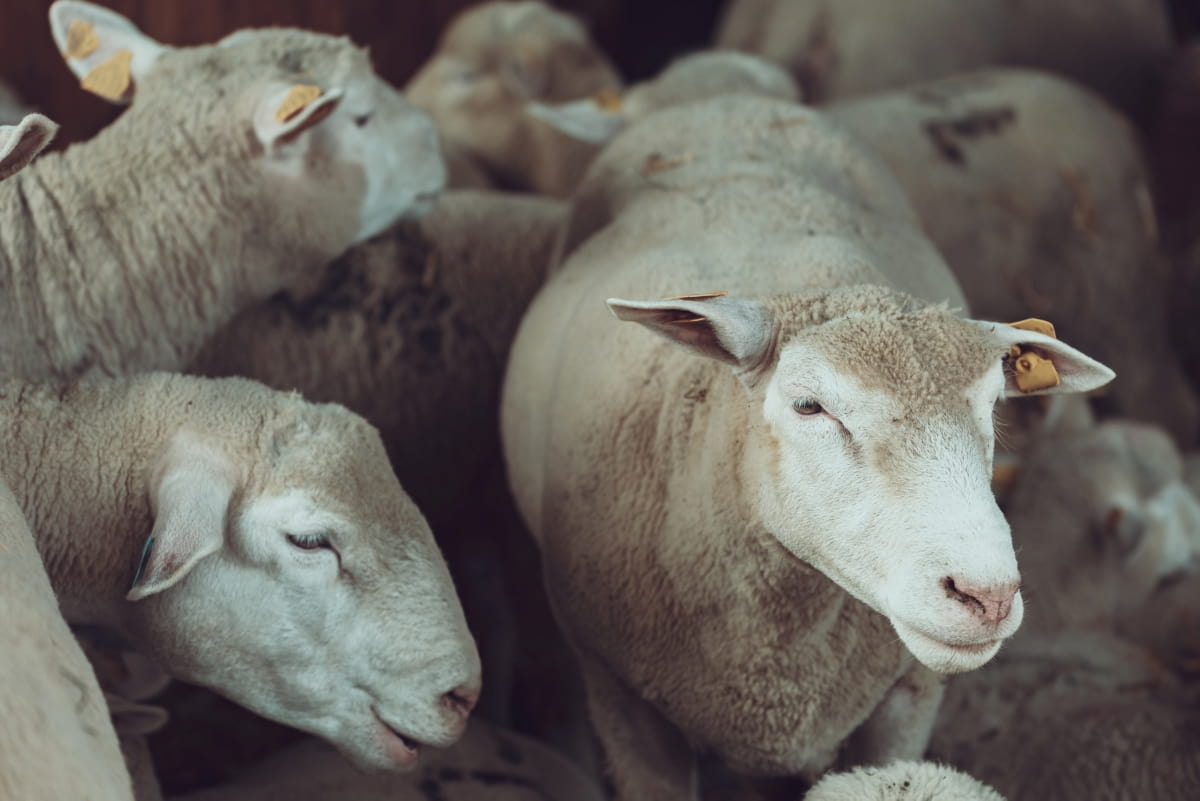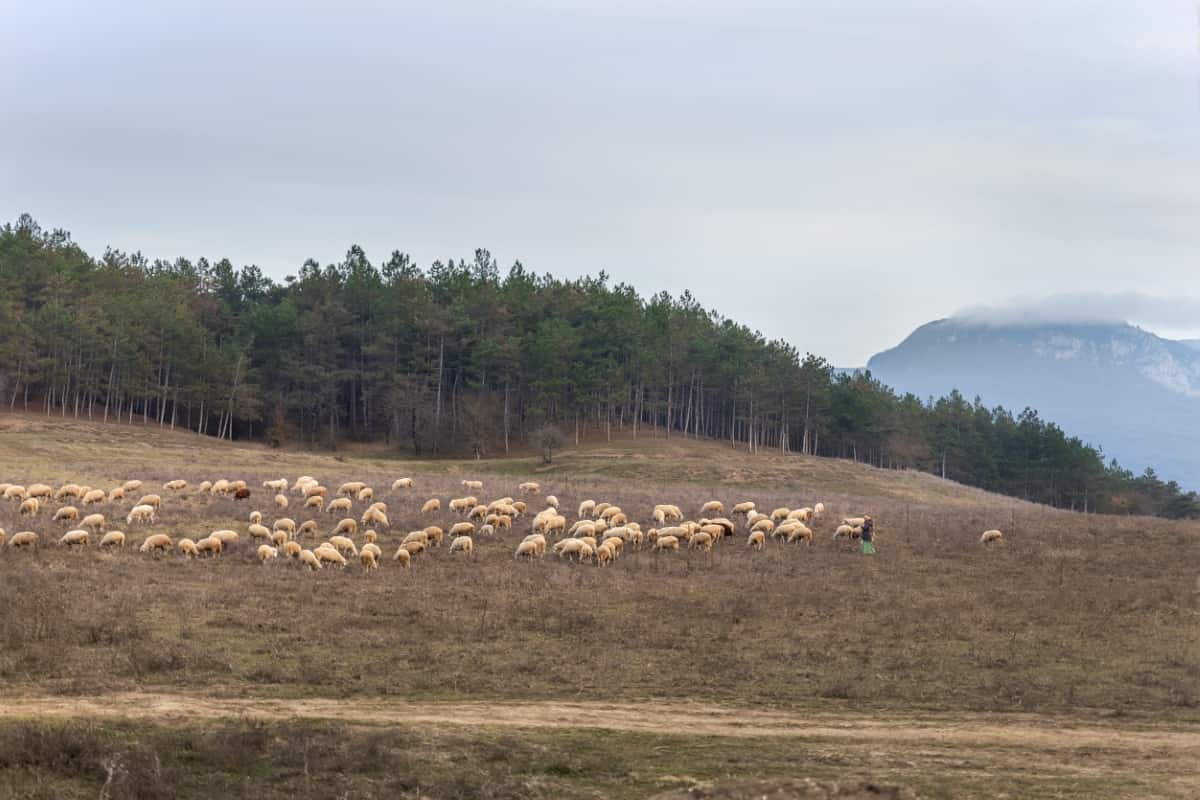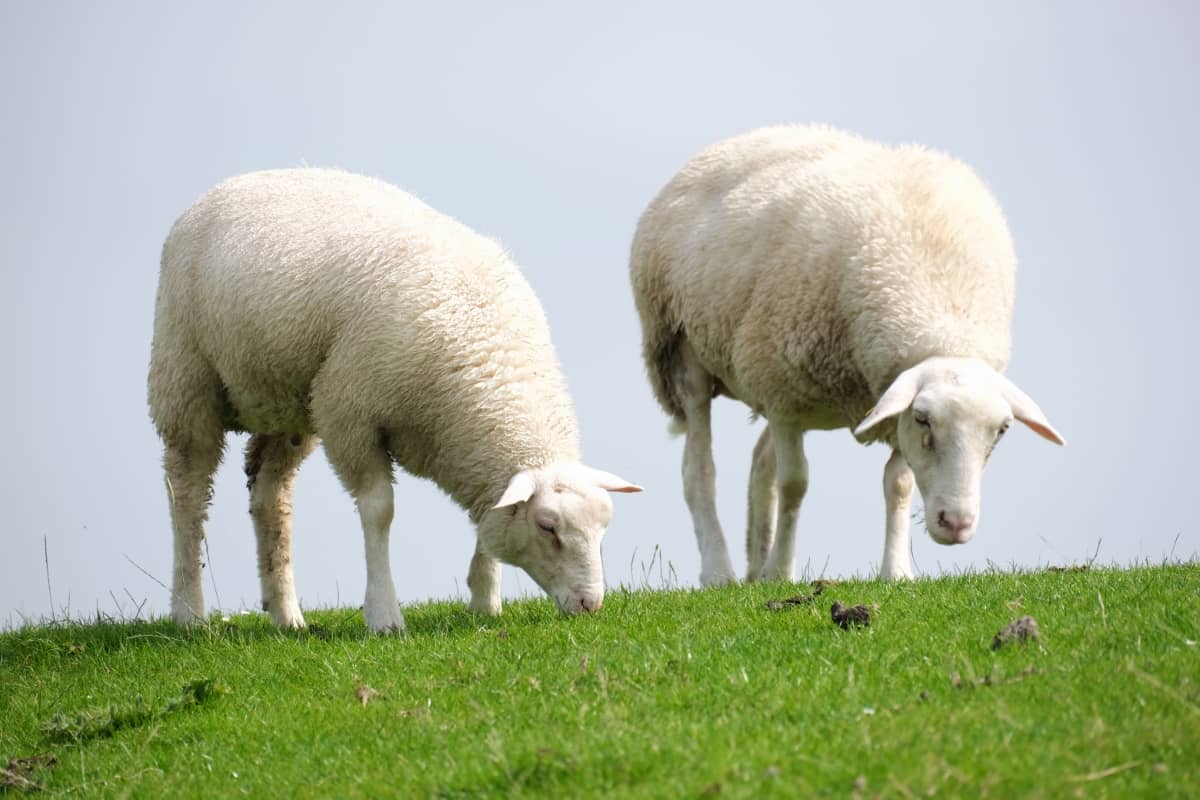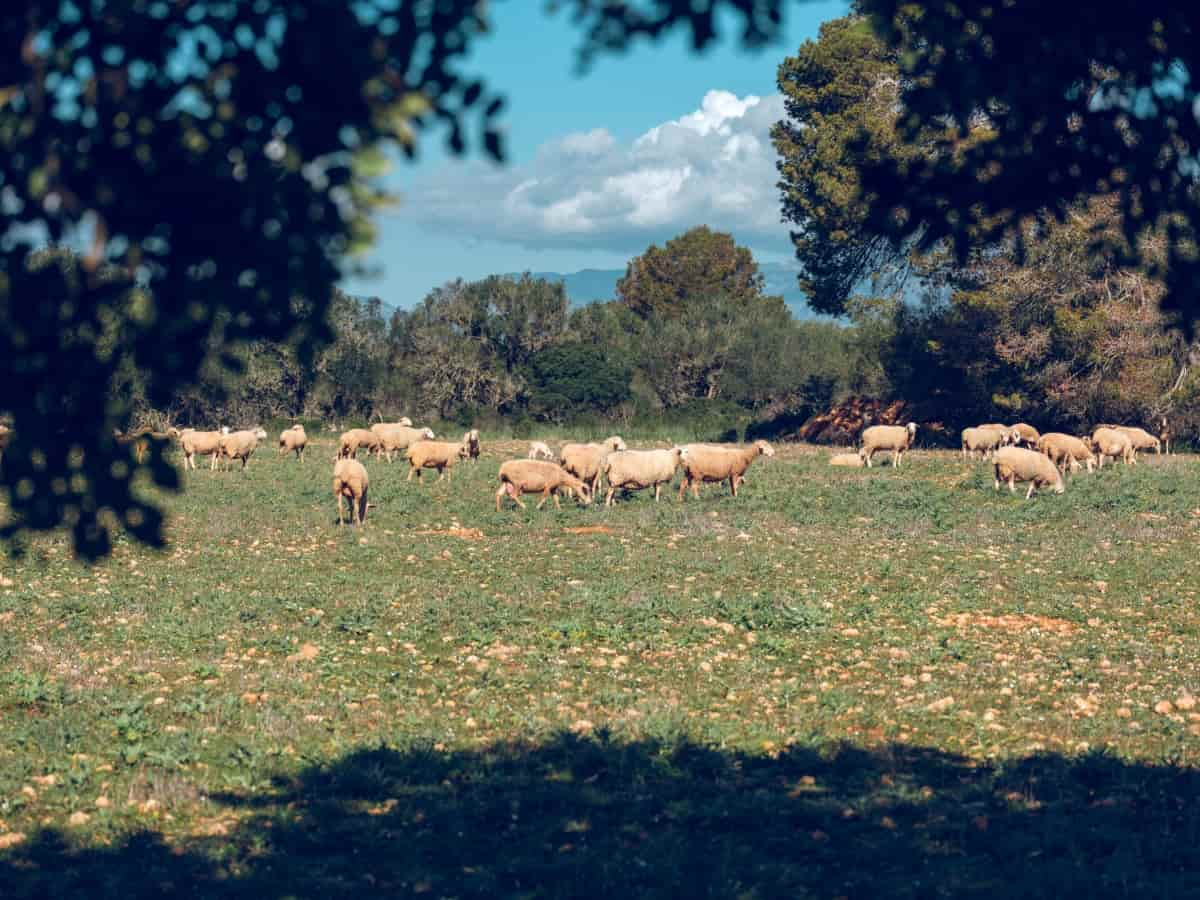Embarking on raising Ile de France sheep intertwines age-old traditions with contemporary sustainable farming techniques. Originating from France, this breed stands out for its exceptional Ile de France meat production and superior Ile de France wool quality. This comprehensive guide covers every facet of Ile de France sheep care, offering specialised nutritional advice and expert Ile de France lambing tips to ensure your flock’s prosperity.

Catering to seasoned farmers and newcomers, this all-encompassing Ile de France sheep farming guide navigates the essentials from housing to advanced breeding methods. Emphasising sustainable practices and meticulous health management, this guide equips you with the knowledge to enhance the value of your Ile de France sheep, making them a lucrative part of your agricultural venture.
Raising Ile De France Sheep
Origin and History
The Ile de France sheep’s lineage is deeply rooted in French agriculture, developed through selective breeding to optimise meat and wool characteristics. This breed’s history mirrors the persistent pursuit of agricultural excellence, adapting over generations to meet farmer and market demands. The Ile de France sheep’s story is a testament to the relentless drive for perfection in livestock farming, highlighting the breed’s adaptability and resilience.
Breed Characteristics and Features
Ile de France sheep are celebrated for their sturdy build and remarkable yield of meat and wool, securing their status as a favoured breed among farmers. Their dense, white fleece not only serves the textile industry but also sets benchmarks in meat production. Their gentle nature makes them suitable for various farming environments, increasing their desirability among experienced breeders and novices.
Breed Profile and Identification
Physical Attributes and Standards
Ile de France sheep are notable for their considerable height and weight, with rams typically outweighing ewes and reaching substantial sizes conducive to meat production. Male sheep typically weigh between 250 and 300 pounds (113 to 136 kg), while females weigh approximately 200 to 250 pounds (90 to 113 kg).This breed’s physical standards testify to their meat and wool yield potential.
Temperament and Behavioral Traits
Their predominantly docile temperament also facilitates easier management and handling, particularly during the lambing season. This behavioural trait ensures smoother farm operations, especially regarding shearing or medical treatment.
Setting Up Your Sheep Farm
Infrastructure Requirements: Housing and Fencing
Establishing a successful Ile de France sheep farm necessitates proper infrastructure, including secure housing and robust fencing, to safeguard the flock from environmental threats and predators. The costs of these requirements can vary significantly, influenced by scale, location, and material choice, often ranging from $500 to $2,000 for initial setup and fencing per acre.
Selecting a Suitable Location: Climate and Terrain Considerations
The selection of the farm’s locale is critical to the flock’s health and productivity, with climate and terrain considerations playing a pivotal role in ensuring a conducive environment for the sheep’s well-being.
In case you missed it: Everything about Devon Longwool Sheep: Characteristics, Uses, and Raising Facts

Nutrition and Feeding Practices
Nutritional Requirements Across Different Life Stages
Ile de France sheep’s dietary needs shift across various life stages, requiring a diet rich in essential nutrients to foster optimal health and growth. Ensuring a balance of proteins, vitamins, minerals, and energy sources is crucial for their development.
Feeding Strategies: Grazing, Supplements, and Alternative Feeds
Effective feeding strategies meld grazing with supplementary feeds and alternatives, providing a well-rounded diet that meets their specific nutritional demands, including vital forage, grains, and minerals, to sustain their health and productivity.
Health Management and Veterinary Care
Preventative Healthcare Practices
Preventative healthcare is crucial in sustaining a healthy Ile de France flock, with routine vaccinations and health assessments essential in warding off common diseases. A regular healthcare schedule is vital for early detection and prevention of potential health issues.
Common Health Issues and Treatments
Prompt and effective intervention is critical when health issues emerge, highlighting the importance of reliable veterinary care to maintain the flock’s overall health and longevity. Familiarity with common ailments and their treatments ensures swift action, minimising impact on the flock.
Breeding Ile de France Sheep
Genetics and Selection Criteria
Breeding Ile de France sheep requires an in-depth understanding of genetics and selection criteria aimed at improving desirable traits such as meat quality and wool output. Selecting the right genetics plays a pivotal role in the breeding program’s success.
Breeding Program Management: Timing, Techniques, and Record-Keeping
Managing a breeding program involves precise timing, sophisticated techniques, and meticulous record-keeping, ensuring the genetic enhancement of the flock and the sustained success of Ile de France sheep sales. Effective management is key to a successful and profitable breeding outcome.
Lambing Operations
Preparing for Lambing Season
The preparation for lambing season is a critical period in the Ile de France sheep farming calendar, requiring meticulous planning and readiness. Farmers must ensure that lambing facilities are clean, well-ventilated, and warm, especially for early spring lambing when temperatures remain low. Supplies such as lambing pens, heat lamps, and necessary medical equipment should be checked and made readily available. Additionally, close monitoring of ewes for signs of impending labor is essential to provide timely assistance.
Care for Ewes and Newborn Lambs
The care for ewes and newborn lambs is paramount to ensure the health and survival of the young stock. Post-lambing, ewes need adequate nutrition to support milk production and recover from the birthing process. Newborn lambs require colostrum within their first few hours for essential antibodies and monitoring for any signs of distress or illness. Tail docking and ear tagging are typically carried out within the first week of life, adhering to welfare standards.
In case you missed it: Beltex Sheep Breed: Characteristics, Origin, Facts and Uses

Wool and Meat Production
Quality and Characteristics of Ile de France Wool
Ile de France wool is known for its medium to fine quality, with a good staple length and crimp, making it desirable for various textile applications. The wool is typically white, which is preferred in the commercial market for its dyeing versatility. Regular shearing, usually once a year, is essential to maintain the wool’s quality and ensure the sheep’s health and comfort.
Meat Production: Growth Rates and Market Qualities
Ile de France sheep are particularly valued for their meat production, with impressive growth rates and excellent carcass qualities. This breed is renowned for its lean, tender meat and optimal meat-to-bone ratio, making it in high demand both domestically and internationally. Proper nutrition and management are key to achieving optimal growth rates and meat quality.
Marketing and Sales Strategies
Identifying Your Market: Wool, Meat, and Breeding Stock
Successful marketing begins with identifying your target market, whether it be for wool, meat, or breeding stock. Understanding market demands, seasonal trends, and consumer preferences is crucial. For wool, the focus might be on textile manufacturers or craft markets, while meat production targets could range from local butchers to international meat processors. Breeding stock sales require identifying other farmers or breeders looking to enhance their flocks with quality genetics.
Effective Marketing Techniques and Sales Channels
Developing effective marketing techniques and choosing the right sales channels are essential for maximising profitability. Digital marketing, agricultural shows, and direct sales are effective methods to reach potential buyers. Establishing a strong brand presence, leveraging social media, and networking within farming communities can enhance market visibility. Pedigree and performance records can be valuable marketing tools for breeding stock to attract buyers looking for quality genetics.
In case you missed it: Bergamasca Sheep: Raising Facts, Profile, Characteristics, Uses, and Care

Conclusion
Mastering the art of raising Ile de France sheep demands a deep understanding of their care, breeding, and market demands, ensuring the sustainability and profitability of your farming venture.
Note: The images presented in this post are intended solely for representation purposes. The images are meant to serve as visual aids and should not be relied upon as accurate representations of their real-life counterparts.
- Feed Your Flock for Less: Top 10 Tips to Save on Chicken Feed
- Ultimate Guide to Ossabaw Island Hog: Breeding, Raising, Diet, and Care
- Hatching Answers: The Top 10 Reasons Your Chickens Aren’t Laying Eggs
- Eggs and Economics: Breaking Down the Cost of Raising Backyard Chickens
- Defend Your Greens: Proven Methods to Keep Iguanas Out of Your Garden
- Ultimate Guide to Cinnamon Queen Chicken: A Comprehensive Guide for Beginners
- Ultimate Guide to California Tan Chicken: Breeding, Raising, Diet, Egg-Production and Care
- Ultimate Guide to Marsh Daisy Chicken: Breeding, Raising, Diet, and Care
- 10 Types of Chicken Farming Businesses You Can Start for Profits